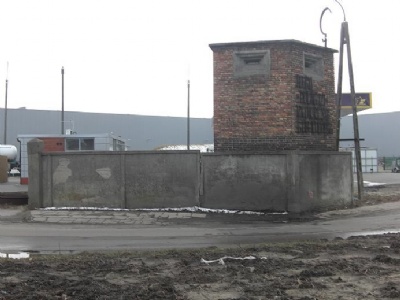Pruszków – Dulag 121
On August 1, 1944, the polish home army rebelled against the germans in Warsaw hoping that the Soviet red army would support the uprising. The Soviets, however, chose to stop outside Warsaw and the Germans could crush the uprising. Thousands of civilians were murdered by the Germans in several massacres. For instance, the district of Wola between 50,000 – 80,000 civilians were murdered. But the Germans also imprisoned thousands of citizens and kept them in transit camps before being deported elsewhere. The largest transit camp was set up in a suburb called Pruszkow, southwest of Warsaw.
The camp was called Durchganglager 121 – Pruszkow, abbreviated Dulag 121, and was located on a 50-hectare factory area under Polish railway authority control. Here they for instance they repaired train cars. In autumn 1939, the Germans took over the factory and used the premises as a temporary prisoner-of-war camp for Polish soldiers. In January 1941, a labor camp was set up for Jews who were forced to work on producing spare parts for trains. The factory was decommissioned in summer 1944, and when the uprising broke out, the factory premises were empty and thus fit the purposes for the Germans.
Dulag 121 was established on the initiative of SS-Obergruppenführer, Erich von Dem Bach-Zelewski, August 5, 1941, and was thus under SS control. The first transport to the camp arrived on August 7, followed by several transports by both trains and trucks. Conditions were disastrous and the number of prisoners increased during the uprising. Thousands of people were executed by the Germans in the camp. For a while the german’s discussed wether the prisoners should be killed. But they decided the prisoners should be used as slave labor instead of being killed.
On August 11, the camp was handed over to the german army’s control, which meant that SS and Gestapo’s arbitrary killings decreased, but did not disappear. About 50,000 went through the camp during its existence between August 1944 and January 16, 1945, when Soviet Red Army approached (Warsaw was liberated on January 17). How many died in the camp as a result of illness, beatings or executions is impossible to establish, except that they amount to several thousand.
Current status: Partly preserved/demolished with museum (2011).
Address: ul. 3 Maja 8a, 05-800 Pruszków.
Get there: Car.
Follow up in books: Davies, Norman: Rising ’44: The Battle for Warsaw (2004).




The museum opened in 2007, and though it’s small, it is interesting, modern and informative and best of all is that it has English translation. Several of the buildings remain or have been renovated and several guard towers and parts of the wall that surrounded the camp remain. The camp area is otherwise a small industrial area with a number of monuments and can be visited.